#50s tv icons
Text

Happy Heavenly Birthday James 🎂93 💔
Buon Compleanno in Paradiso 🎂💔
February 8,1931 - September 30,1955🙏🏻
8 Febbraio 1931 - 30 Settembre 1955🙏🏻
We Miss You So Much 🕊️♾️
Ci Manchi Moltissimo 🕊️♾️
#james dean#actor#worldcinema#cinema#movies#film#cinemetography#filmography#comedy movies#drama movies#tv shows#50s movies#50stvshow#east of eden#rebel without a cause#giant#icons#old movies#old hollywood#celebrity#rest in peace#happy heavenly birthday
21 notes
·
View notes
Text
Y'all don't understand Sean's importance
#he has the power to be one of the most iconic queer characters on TV#make Sean#a 50-year-old white man happily married#also interested in his best friend#that's fucking genius#wwdits sean#sean rinaldi#kztpost
14 notes
·
View notes
Text

#i love lucy#lucille ball#iconic#sitcom#lucy ricardo#1950s#lucy ball#ball#50s#comedian#comedy#Lucy#Tv show#Tv series#television#in color#housewife
2 notes
·
View notes
Text
Ava Gardner.
Gardner as Julie LaVerne in Show Boat
https://en.m.wikipedia.org/wiki/Ava_Gardner

Ava Gardner's Original autograph!


#old hollywood#old hollywod glamour#ava gardner#silver screen#old old art#old fashioned#old glamour#old movies#elegance#hollywood#tv icons#movie stars#classic hollywood#golden era#vintage retro#retro fashion#50s aesthetic#50s vintage#40s movies
3 notes
·
View notes
Text
Finally feel like I can say something coherent, so here goes...
I say this without a shred of exaggeration: Akira Toriyama was legitimately one of the most important creative figures of the last 50 years. His work, especially Dragon Ball, has influenced SO much even outside its own medium. Movies, TV, cartoons, comic books, video games, MUSIC... all of it. You can see his fingerprints in so many other works. Even now, artists and writers, voice actors and animators, musicians and game devs are all mourning him and reflecting on the impact he had on their own work. Titans of anime and manga are sharing in this pain.
The craziest thing about this though? The humility he had in spite of it. He was always reluctant to be in the spotlight, preferred to keep his head down and just work, never really worried that much about public perception of himself. Part of what makes him such an icon, man.
Losing him is losing a piece of our shared history. It's something that resonates deep in the hearts of everyone his work touched. This is just... such a loss. And I can't even begin to imagine what his family is going through right now. Praying for them all.
Rest in Peace to a literal Legend, an absolute Icon, and a personal inspiration in more ways than I could ever express properly.
#Akira Toriyama#dragon ball#dragon ball Z#Dragon Ball Super#Dragon Ball Daima#DBS#DBZ#RIP#dragonball#dragonball z#dragon quest#chrono trigger#blue dragon#SandLand#Dr. Slump
7K notes
·
View notes
Text
♡Astro Observations for the Gays, Queers, and the Girlies♡

❣ Libra placements and the urge to be liked by people that don't like them (even though they themselves don't like them either)
❣ Gemini placements (especially Rising/Venus/Doms) have a contrast in their feminine and masculine style/taste/interests. They frequently change from one end of the extreme to another, rarely in between. Think bougie girls who like to get all done but aren't afraid to eat with bare hands or etiquette.
❣ Sun/Moon square Jupiter doesn't have the best relationship with one or both of their parents/parental figures
❣ I noticed many gay icons have a Venus in Gemini, Leo, or Sagittarius/ MC in a Water or Fire sign/ 5th house in an Air or Water sign/ Pluto in the 1st, 3rd, 5th, 10th (Of course there are exceptions but I found these to be the most reoccurring)
❣ Despite the perpetuated stereotypes, the people that I have known to throw down with others the most have been Cancers, Virgos, and Libras. Meanwhile, the Aries, Scorpios, and Saggitarians were either diplomatic or cowards (Cowards as in they would talk a big game but when push comes to shove, they'll run).
❣ Sun conjunct Saturn will stay stepping on people's necks
❣ Taurus Venus are obsessed with the 50s/60s
❣ Earth Moons emotional state can be reflected in their surroundings. When they're feeling low, they can either seek control by controlling others and being critical or they shut down and let everything go to waste (uncharacteristically of them). In extreme cases, they can become hoarders.
❣ Moon square personal planets 🤝 Being a bitch 24/7
❣ Virgo is the sex freak yall been sleeping on
❣ Water placements and the struggle of wanting to be left alone and also be given love and attention
❣ Also on the topic of Water placements in general, why do they never get along with one another?
❣ Sun/Venus in the 1st/5th/7th/10th/11th grow from a "fawn among sharks" to the HBIC
❣ Venusian (Taurus and Libra) and Mercurian (Gemini and Virgo) placements are common among prominent fashion designers/houses. (Anna Wintour, Donatella Versace, Karl Lagerfeld, Coco Chanel, Georgio Armani, Pierre Balmain, Marc Jacobs)
❣ Gemini, Leo, and Sagittarius are the epitome of the 00s "it" girls
❣ Your rising reflects on the purpose/struggle of your life journey.
Exp:
Aquarius rising's life-long mission is to find who they're and be themselves
Taurus rising's lifelong mission is to be comfortable with themselves and find gratitude
Sagittarius rising's lifelong mission is to find their purpose or calling
Cancer rising's lifelong mission is to find strength in their heart and let the world in
❣ Scorpio Venus is obsessed with movies. Especially ones that are historical depictions and/or true stories.
❣ Taurus and Libra, Scorpio and Sagittarius, Aries and Virgo are some of the most underrated friendship pairings
❣ Despite all the fame indicators, Chiron in Leo remains the most prominent. Many child stars have this placement. (Selena Gomez, Ariana Grande, Demi Lovato, Miley Cyrus, Keke Palmer, Justin Bieber, Freddie Highmore, Josh Hutcherson, Jennette McCurdy, Debby Ryan, Miranda Cosgrove, etc.)
❣ You attract people that have placements in your 1st, 3rd, and 11th house. Meanwhile, we are attracted to people with placements in our 5th, 7th, and 8th.
❣ The placement of the personal planets along with the rulers of the house mentioned also play a big role, but it pertains to the nature of the relationship than just attraction.
❣ The sign opposite to the sign of your Venus is usually in the big three of your early years crushes and people "you know better than to like". (They may also share a similarity or quality to said sign)
❣ My association of each Lilith signs with an iconic female lead (Movies/TV):-
Aries/1st house Lilith: Regina George 'Mean Girls'
Taurus/2nd house Lilith: Cookie 'Empire'
Gemini/3rd house Lilith: Brenda 'Scary Movie'
Cancer/4th house Lilith: Thelma 'Thelma & Louise'
Leo/5th house Lilith: Jade 'Victorious'
Virgo/6th house Lilith: Miranda 'The Devil Wears Prada'
Libra/7th house Lilith: Elle Woods 'Legally Blond'
Scorpio/8th house Lilith: Jennifer 'Jennifer's Body'
Sagittarius/9th house Lilith: Chanel 'Scream Queens'
Capricorn/10th house Lilith: Fallon 'Dynasty'
Aquarius/11th house Lilith: Veronica 'The Heathers'
Pisces/12th house Lilith Courtney 'Jawbreaker'
Byeee💅
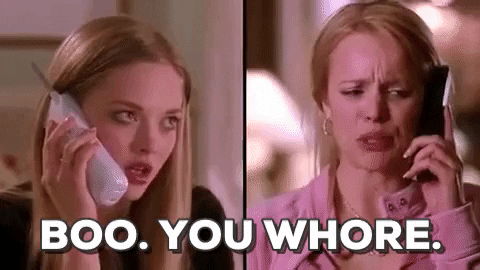
#astro notes#astro observations#astrology notes#astrology observations#astrology#aries#taurus#gemini#cancer#leo#virgo#libra#scorpio#sagittarius#capricorn#aquarius#pisces
2K notes
·
View notes
Text
Really like the idea of a yandere Vox who is so ride or die for his overconsumerist capitalist Musk-esque lifestyle UNTIL he sees it negatively affecting his darling and does a complete 180
like take that poly red string soulmate Vox x Reader x Alastor concept and, you've got Alastor KINDA warming up to technology and willing to watch TV and do other things with you but he's still not a fan of you being on your phone constantly and some of the video games and movies you consume. He's on the couch reading a paper and (affectionately) rolling his eyes as you and Vox take turns headshotting each other in a video game and hollering "hell yeah, suck my fucking dick!!"
Meanwhile Vox is just 200% chronically online and loving it until one day he asks you why you wear baggy clothes all the time and you're ever so casually replying "because my body is fucking icky, duh" and Vox has absolutely no idea what you're talking about until you break down on a tangent about it
I was watching a clip the other day where someone was pointing out that Marilyn Monroe was considered the 50s icon of beauty and there are plenty of photos with her with thick thighs or a visible belly pooch and, imagine Vox sitting there, the disbelieving 'are you joking?' smile falling off of his face as you just, go OFF, "why would I wear anything other than sweatpants? I have fucking CELLULITE VOX, I'll NEVER have leggings legs no matter how thin I am, and look at my hip dips, they're so fucking GROSS, and my butt isn't shaped right, I have banana rolls, and, do I have siren eyes or doe eyes?! Am I bunny cute or am I frog cute?! And look at how bad my facial balancing is! Ugh, where's my gua sha?! I'm so tired of being UGLY!!"
Later that week Alastor is looking up from his paper to see Vox just, slowly entering the room, sloooooowly shutting the door behind him, looking to his old friend, "so hey! Funny idea, stop me if you've heard this one before but, I was thinking we could uh, maybe take their phone away annnnnnnnnnd... not give it back?" and here's Alastor, "oh, funny story! So earlier today they asked me if I 'wouldn't like them anymore' if they got COSMETIC SURGERY, yeah, ON THEIR FACE BELIEVE IT OR NOT, so, naturally, I'm already one step ahead of you :)" as he just casually gestures to the smashed wifi router in the garbage can in the corner of the room
You just get home from work one day and Vox has his CRT head back on and you're told 'if you want to look something up online, you can use the desktop in the computer room, and only 3 hours of screen time' and it all but blasts you 15 years into the past 💀 no more nights where you're gaming for 5+ hours straight and ruining your sleep. No more skipping meals because you're hyperfocused and binge-watching an anime while also playing an idle game on your phone. No more Alastor and Vox finding out you're just smoking bowls for hours literally nonstop because you need some sort of extra stimulation while you doomscroll and watch 3 hour long roast reviews for shows you've never watched
Alastor catches you swiping through an app and you get a divisive video thrown in your face from some alpha dude bro podcast, "yeah, a real man knows how to protect his lady! She should be at home cooking and keeping the house clean, not running around like a tramp and doing dumb chick stuff! All women need to focus on is marriage and being good wives, you know, a TRADITIONAL relationship!" and Alastor is just, swiping that shit out of your hand, "he DOES have a bit of a point, repulsive as he is! I suppose I'll have to start looking at potential dwellings that can fit you, me, and, I SUPPOSE Vox too 🙄" and little do you know he's already got a cute little home in the 'burbs set up already. He's just... you know! Waiting for the right moment to let you and the annoying TV bastard know that you'll be moving! Maybe he'll just... wait until the day of! Nothing beats a fun surprise, right? ^^ he doesn't want either of you... trying to run away or anything after all haha!
#i actually have had an almost completelt finished vox fic w this conccept sitting in my drafts since like. February#yandere stuff#yandere hazbin hotel#vox x reader#hh#sinprompts
149 notes
·
View notes
Text

50+ Mods for Aesthetic Gameplay
Lighting Mods
Balance Gshade
Sunblind
Better In-Game Lighting Mod
No Blur in the Distance
CAS Mods
Simfluencer CAS Background
Stand Still In CAS Mod
More Columns In CAS
Zodiac Signs Mod
Instant CAS Story
Chingyuu Traits
Aesthetic Traits
Minimalist CC Wrench Icon
Unlimited Likes and Dislikes
Tidy CAS
Hair Overlay
More Traits In CAS Mod
World Traveler Aspiration
Preference Plus Mod
Overrides
The Appliance Collection
San Myshuno Billboard Overrides
Bauney Pods Max Headphones
Cocogames Phone Wallpaper
Black Art Painting Mod
Functional Magazines
Ultimate Movie Mods
Cutting Board Override
HD Feet
The Pet Collection
Digital Sketchpad Recolor
Ebonix PC Game Overrides
Brasi's TV Override
Interaction Mods
Go For a Jog Together
Storytelling Socials
Precious Moments
Drama Mod
Expanded Storytelling Relationship Bits
https://www.katie-mods.com/
Greetings Mod
First Impressions Mod
Gameplay Mods
Sim With Shan Traditions
Relationship Pregnancy Overhaul
Immersive Social Bunny
Longer Parties and More Guests
MC Command Center
Ding & Ditch Doorbell
21 Day Season Instead of 28 Days
KiaraSims Events
Basemental Drugs
Wicked Whims
Control Any SIms
Social Network Crossover
Home Regions
180 notes
·
View notes
Text
I have some thoughts about Amazon's Fallout TV Show.
The show is of course disrespectful to West Coast Fallout, but in a more insulting way than just having the many iconic elements of the classic games be reused over and over again. You start to really feel as though that Bethesda resents the success and continued interest in New Vegas, and while that may be true, it doesn't explain the mountain of references to both the classic Fallouts and New Vegas.
I assume there was need to appeal to the fans of the West Coast, as the TV show is a large event and they would make a portion of viewership. There's all sorts of things sprinkled in, the Brotherhood is fashioned to be more medieval with monk robes and rituals, one of the props used for a pistol is a recreation of the stupid Hard Boiled magazine-fed revolver from Fallout 1. These references are all just borrowing from the aesthetics from prior games, though. It was probably expected that FNV fans would be happy with this representation alone.
Maybe they didn't see that there would be such a negative reaction to flattening all that has been built up in the West Coast, people would just be happy to see the NCR and New Vegas, even though they were nuked or left in ruin. Maybe people would point at the screen when they saw Robert House, not caring that his inclusion contradicts his ideology and goals in FNV. Why would they change the West Coast so much? Well, maybe they don't know what to do with it after FNV. Or that the fact that the West Coast has actual nations and progress doesn't fit well with Bethesda's view of the series of just being a perpetual apocalypse where you can explode raiders' heads while listening to 50s music. There is another reason I haven't seen discussed, but I need to first write about another part of the show that bothered me.
There's definite anti-capitalist themes in this show, as there is in all of Fallout. The Fallout show is different in the way that they aren't particularly background, just told in old world terminals and other storytelling. They are front and centre to the final few episodes of the series, but told in a very bad way. It's not the general system of capitalism caused America to keep declining to it's eventual fall anymore, it's rather disappointingly been changed to simply a shady cabal of evil capitalists that decided to drop the bomb because it would be profitable. And don't worry, the group trying to fight back against this aren't actual communists, they are rich Hollywood actors, so it's all good, they aren't like actual communists who deserve how they are treated under this America. It's rather a boring way of going about it.
It's the use of the line "War never changes." in the scene where this is all revealed that made me realise a potential reason why the slate in the West Coast was wiped clean. I think they are interpreting "War never changes." as "The world will always be in a state of perpetual war, new societies will arise but they will always fall as violence and cruelty is innate to human existence." rather than "War doesn't change despite how it's fought; no advance of technology or reasoning will change how pointless it is and the end result of suffering and destruction."
To demonstrate this, the NCR must fall. Just have Vault-Tec nuke it like they did for the old world, no matter how unsatisfying of a fall for the NCR that may be.
With the Marvel-esque sequel stinger of New Vegas being a setting of season 2, I'm morbidly curious if they will continue to mess up further, but maybe it's time to just let go and stick to the old games that I actually enjoy.
97 notes
·
View notes
Text

Happy Birthday Sean 🥳🎂🎈🎁🎉
February 25,1971
Buon Compleanno 🥳🎂🎈🎁🎉
25 Febbraio 1971
#sean astin#actor#babystar#80s icons#world cinema#cinema#movies#film#cinemetography#filmography#tv shows#comedy movies#drama movies#80s movies#90s movies#2000s movies#the goonies#the war of the roses#the lord of the rings#50 first dates#gloriabell#adverse#24tvshow#stranger things#teenage mutant ninja turtles#bunnicula#celebrity#happy birthday
5 notes
·
View notes
Text
Diahann Carroll Vs. Rue McClanahan
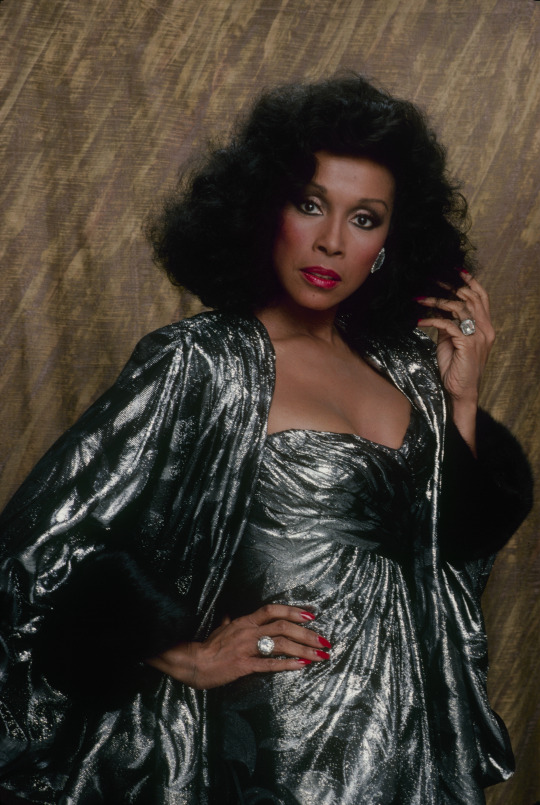
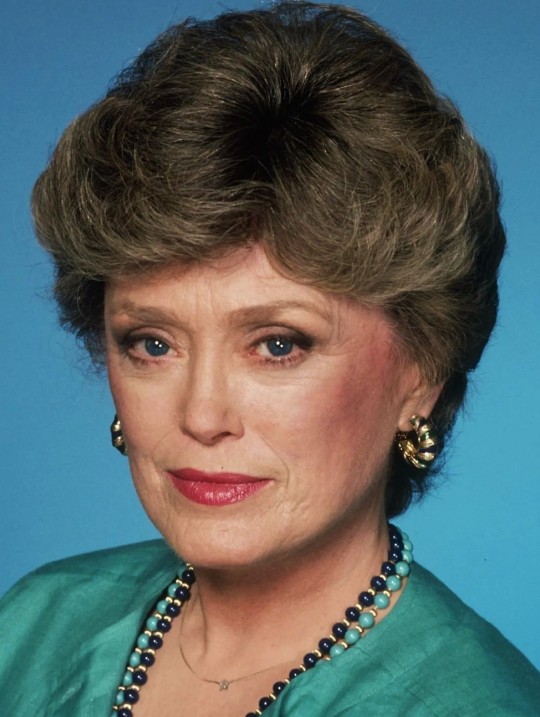
Propaganda
Diahann Carroll - (Dynasty, Julia) - God every clip of her on Dynasty is just so iconic, her entrance, the bit where she shades Joan Collins' Alexis for her taste in caviar... "I wanted to be the first black bitch on television" she said, and she did it beautifully!
Rue McClanahan - (Golden Girls, Maude, Mama's Family) - Listen to me. I have never understood celebrity crushes until I first witnessed Rue McClanahan. She's the most beautiful woman I've ever seen - just look at her!! Gorgeous eyes, the cutest nose, a SPECTACULAR smile - she has this adorable, princess-like quality about her AND she's also a complete hottie AND she's aware of it: she HAS THE RANGE, people!! Her two most famous roles are polar opposites, in fact: she starred in the role of naive, gentle Vivian Cavender-Harmon in Maude (and I mean. Just look her up and tell me that's not an angel!), and then went on to gain even more well-deserved fame and success as the seductive, extroverted Blanche Devereaux in The Golden Girls (a role for which she won an Emmy in 1987 - her amazing, hilarious acceptance speech can be found here: . I should also point out that both of these are comedy characters and she is HILARIOUS as them both - the comedic timing, the delivery, the expressions, she was a comedy queen!!! As for her personal life, she was just a darling - and also very funny in person, not just in her acting roles! She was a staunch supporter of gay rights and a big advocate for same-sex marriage in the US, as well as a vegetarian and a big defender of animal rights. She suffered from illness in her later years which greatly impacted her health, but she was still very active up until her death in 2010, and she even released a wonderful autobiography in 2007 titled "My First Five Husbands... and the Ones Who Got Away". In her interviews she's always gentle, soft-spoken (her voice. dear god. sweet mother Aphrodite I cannot weave I am overcome with gay thoughts), and kind, but also sharp, witty, and just a delight to watch. I could go on forever talking about her honestly. I am actually in love with her and you should be too. She's just the best! Here, have some additional pics: (pics below the cut)
Master Poll List of the Hot Vintage TV Ladies Bracket
Additional propaganda below the cut
Diahann Carroll:
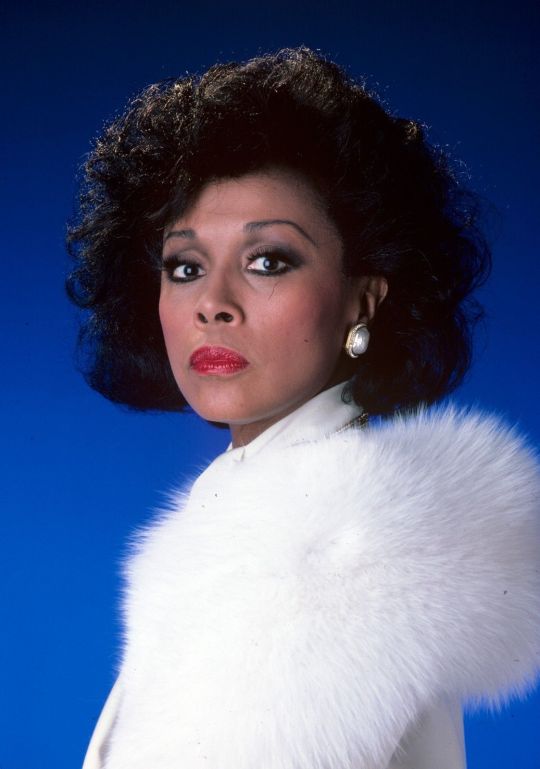
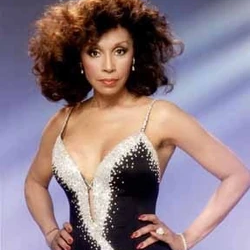
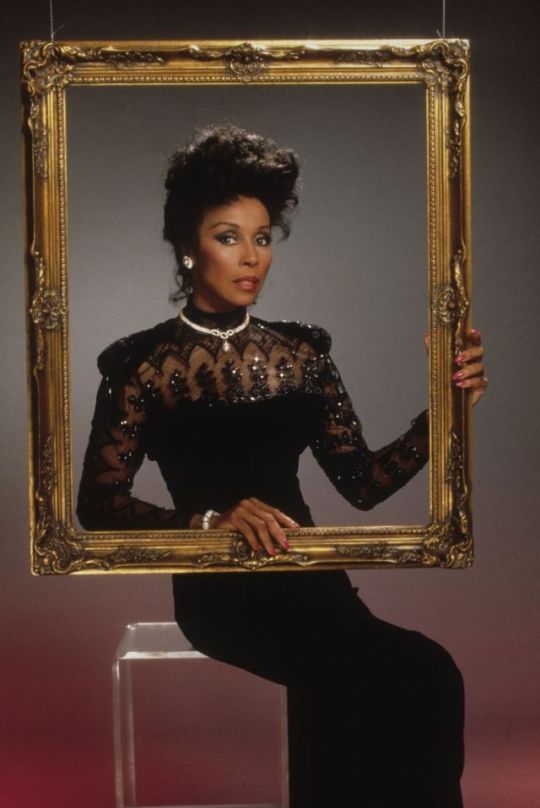
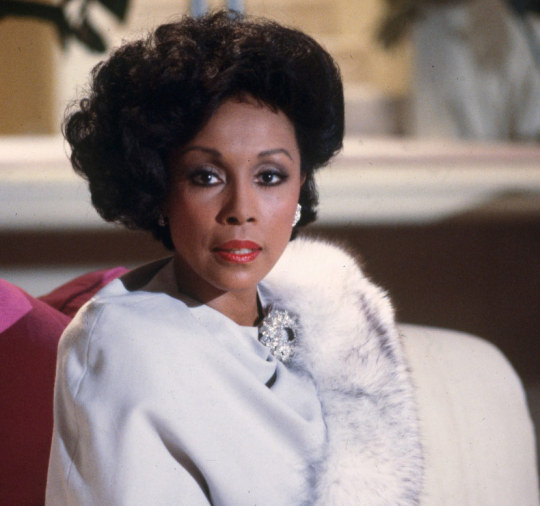
Diahann Carroll's First Scene on "Dynasty"
youtube
Rue McClanahan:
The Hottie™ of the Golden Girls, she was definitely a GILF. And her character's shenanigans were Emmy-winning but no less fun and her outfits were always on point and gorgeous, befitting her perfectly.
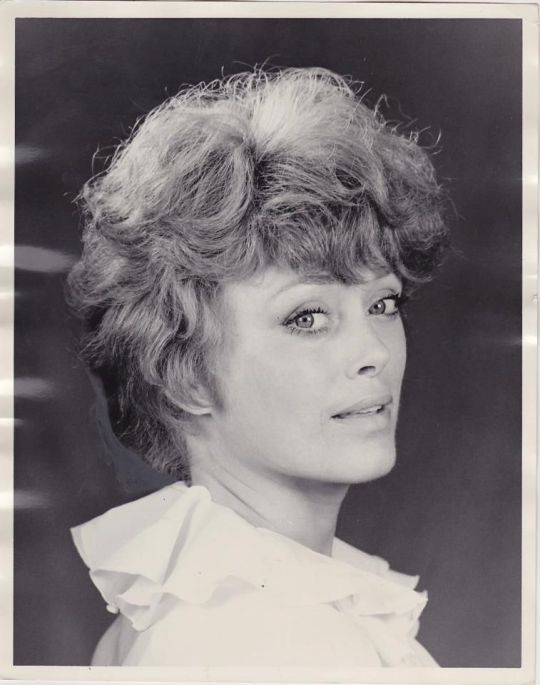
she!!!

as Vivian, with her fellow hottie Bea Arthur as Maude
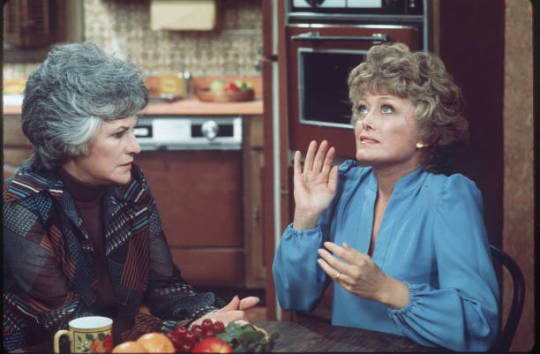
as Blanche - look at those eyes!!!

come on, tell me you wouldn't do anything for that smile, I dare you
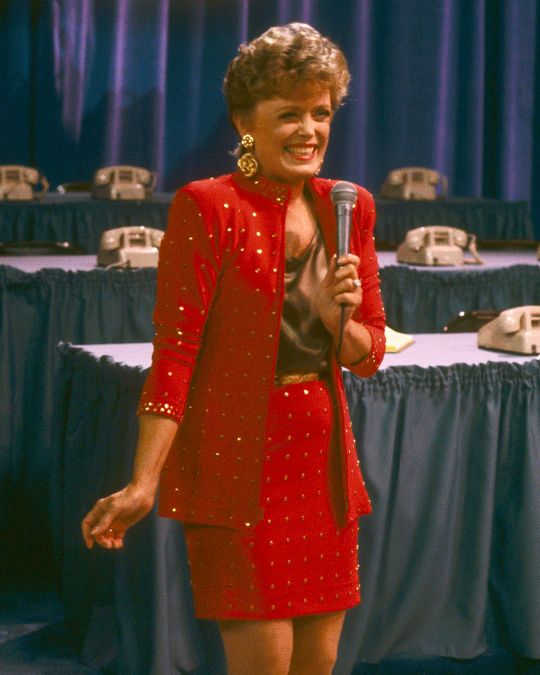
in her contract she specifically requested to be given all of Blanche's clothes and SHE WAS RIGHT
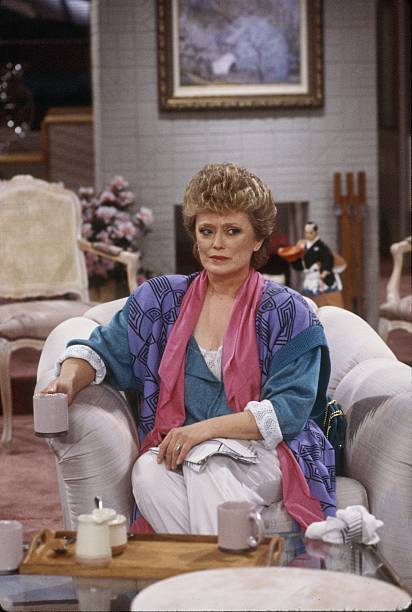
Okay so first of all. Rue has this way of moving around and looking at you that just-- I mean, I'm ace, but I *get* the allos. She's hot and she knows it (and she plays a character in The Golden Girls who's in her 50s, hot, and knows it as well. Which, talk about perfect casting??) But I'm mostly here to talk about the fact that she said this in her Emmy acceptance speech (paraphrased because I'm sharing the video with the right timestamp, and you should absolutely watch up until 3:40, because her delivery is UNMATCHED): "My mother said to me once [...] 'Oh, Eddi-Rue, for heaven's sake. Don't you know every kick's a boost?' There've been a lot of kicks, and there've been a lot of boosts. I'm not going to mention the people who gave me kicks... but you know who you are. And you'll be in the book." (Seriously though, do yourself a favour and watch that video. She's amazing!!) She said this, and proceeded to WRITE THE BOOK, titled "My first five husbands, and the ones who got away", which is *incredibly* funny, and such an earnest look into her life. She opens the acknowledgements with "This book is about my life and experiences as I lived them, and anyone who doesn't like it can jolly well lump it." And I mean... she's awesome. I could go on.
Rue McClanahan @ The Emmy Awards 1987
youtube
59 notes
·
View notes
Text
Hazbin hotel Headcanons because why not;D
~~Enjoy~~
Alastor
50% Ler! 50% Lee!
•This strawberry lad here can figure out what your ticklish spot is in a heartbeat, And once he finds it he shows no mercy.
•Once he knows your ticklish he will torment you with it,Even embarrassing you in public
•He likes to use old style fashion tickling, Which in that case..Stocks!
•He uses his Claw’s from time to time to really get those weak spot of yours!, And he’ll throw in some tentacles for fun ;D
•When being tickled himself, he would have a broken radio kind of laugh- He won’t beg since that’s a sign of weakness ;D
“Smile for me dear~ as it’ll be your Last~”
“Coochie Coochie coo~ you little Thing~”
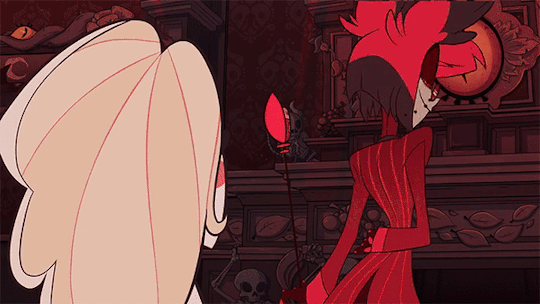
Vox
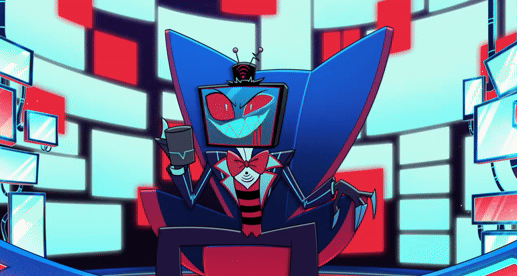
30% Ler 60% Lee!
•Vox only tickles people to get what he wants, If people decline he will go all out on you until you submit.
•He has a Sensation shock which can Make anyone more Sensitive before;D in that case..More TICKLISH~
•Val always tickled Vox for fun,Even though he hates it he still cannot get Val to stop.
•When he laughs he sounds like a broken TV, and Has so much electricity from the amount of laughter he’s in..which causes him to electrocute Val on Accident.
•But Val has figured out a Way to Avoid the shocks by having Vox tied down, and that’s where the fun begins;D
“Wow!, I would have never thought my sensations would fuck you up THAT bad!”
Valentino

50% Ler 50% lee!
•This Mothman is Extremely sadistic when he’s tickling someone, Which is why most stay away from him.
•He has a Tickle Saliva which can make people more ticklish when licked, His smoke can also make chains that Restrain you so that he can have all the fun~
•Him having 4 arms is already torture enough for him to go all out on you, Once he finds your ticklish spot he’s gonna tease you until you break.
•He Usually tickles Vox when he pisses him off, or isn’t giving him enough attention. He usually attacks Vox’s Sides outta nowhere;D
“What’s wrong Voxy~ I thought you liked my tickles?~”
“I Guess the moth can Defeat a TV after all~!”
Lucifer
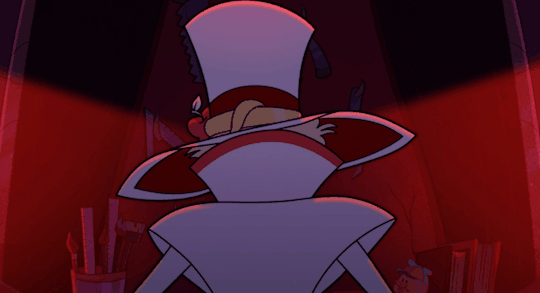
50% Ler! 50% lee!
•This silly little King is literally the most ticklish person in all of hell, And Nobody knows it but the overlords ~
•When he tickles he’s quite gentle with it!, Until his full demon side comes out and he tickles you more rough.
•He will sometimes use his claws or wings to tickle his victims, He used to tickle Charlie when she was young!
•When he’s tickled He begs for Mercy immediately, He has quite a Charming and loyal laugh, as he blushes from the teases;D
“Come out come out Where ever you are~ Lucifer’s gonna get you~”
“Tickle Tickle Little Demon!”
Sir Pentious
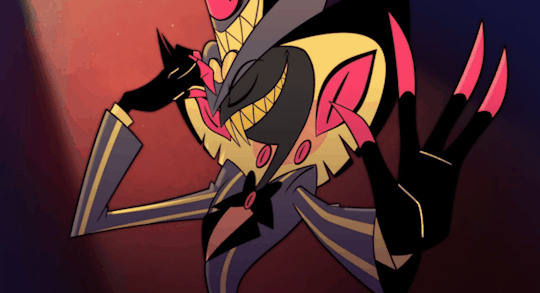
100%
•This silly Snake Lad is Extremely ticklish, Everybody knows about it including Alastor! During some of their battles Alastor used to tickle torture him a lot.
•He’s ticklish on the snake half of his body and his Hood, And most of his sides as well as he tries to Hypnotize Alastor during tickling sessions..They Don’t always work~
•He Hides away from everyone when their having a Tickle fight, and always get caught by Alastor.
“Wait Pleasssse!! Ssstop-!!”
Velvette
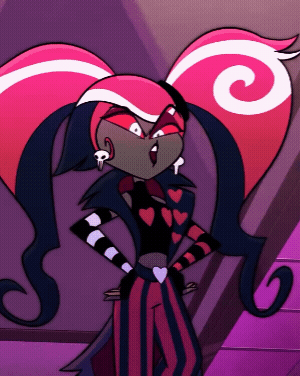
30% lee 60%
•This Icon of a girl right here is a master at tickling!, and she knows it too;D
•As She used to tickle Vox in the past..She can be Very rude and cruel with her tickling.
•As she tickles People she exploits it to the internet to make sure everyone knows so they can get tickled more by people~
•She will find ways to restrain you, but if not she’ll just jump on you and start tickling.
“Awh! What’s the matter?, You can’t handle ticking?~ that’s more pathetic than the outfits here love!”
Carmilla

100% Lee!
•She doesn’t like tickling much, as she Used to kill anyone who did tickle her
•She has such an adorable laugh anybody could literally fall in love with!
•Her daughters tickled her a lot when they were toddlers, She used to hate it back then.
•Zestial tickles her Nowadays to relive stress from her, And to make her more happy than ever!
“Z..Zestial stop-!!”
Zestial!

100% Ler
•This spider like fella is such a huge tease when tickling, he sometimes would tickle Alastor himself just for the fun of it!
•He has webs that he traps his lees in, And sometimes he would close his wings on you, and let little spiderlings tickle you from the inside!
•He can Hypnotize you with his bright green eyes, as he lets many people fall for his tricks, he can easily blend in the dark..The only thing you would see are four giant green eyes.
•He loved tickling Carmilla just for the fun of it, He knows she hates it but he does it anyways!
“Awh..Just listen to you laugh Alastor,And I thought you were the mighty RADIO Demon~”
“Come on Carmilla~ Smile for me hun..it’s not that hard~”
Don’t worry more are on the way;D just gotta take a break!
96 notes
·
View notes
Text
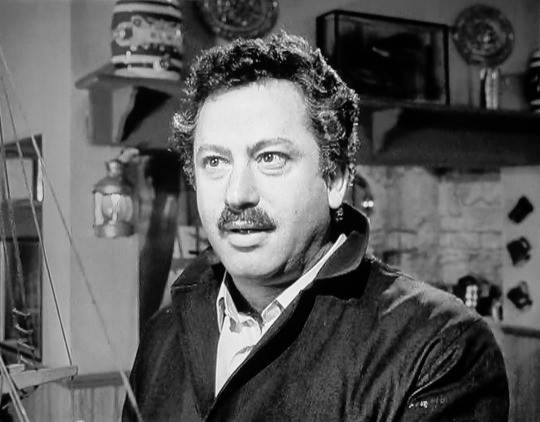
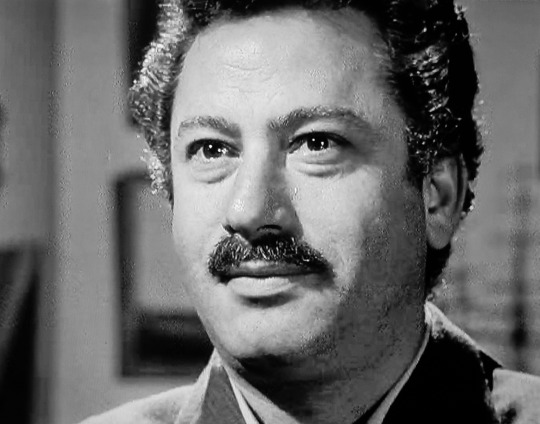
Spaghetti Western icon and international film star Frank Wolff inexplicably turns up as the villainous Jim Reston in The Saint: The Old Treasure Story (4.9, ITC, 1965)
#fave spotting#frank wolff#italian cinema#spaghetti western#the saint#itc#1965#the old treasure story#ok this one is probably just for me#i mean i don't think i have many Italian cinema mutuals‚ at least not many who'd be as excited to see Frank Wolff pop up in my old brit#tv show. but it was the sheer weirdness of it that threw me! this is like an opposite fave spotting. it's not that unusual to have a Brit#or American face turn up in an Italian genre film‚ but the crossover with old British tv (my other one true love) is pretty minimal#but then Wolff wasn't Italian; such was his ubiquity in Italian genre films‚ particularly westerns‚ that I'd entirely forgotten he was#American. in fact he got his start making cheapy horror movies with Roger Corman; it was Corman who advised him to stay in Europe after#shooting finished on sword and sandal flick Atlas‚ and stay he did. over the next decade Wolff made more than 50 films mainly#in Italy‚ a great many of them spaghetti westerns but also gialli and comedies. he became an iconic face in italian cinema (he even has a#small but crucial part in Leone's opus Once Upon a Time in the West) until he sadly took his own life in 1971. but at some point he clearly#took a trip to the UK; The Saint isn't quite his only brit tv role (he also did two eps of The Baron around the same time) but it's very#much an outlier in his filmography. he is tho‚ it must be said‚ absolutely brilliant here. he's a yank former sailor turned gun toting#treasure hunter‚ and he's having the absolute time of his life. he enters‚ in an incredible dark and stormy night setup‚ giggling. he calls#Simon pretty. he adds 'man' to the end of most sentences as tho he were a teen beatnik. it's a brilliantly assured and utterly felt#performance (he feels‚ if it makes sense‚ like a film actor entering a world of tv actors)#Frank only lived another six years after this episode went out‚ but he made nearly 40 films in that time#that kind of proliferation can hurt some actors' performances but i can honestly say I've never seen him in anything where he wasn't#absolutely mesmerising. this was a joy of a surprise
6 notes
·
View notes
Text

6 notes
·
View notes
Text
One thing I keep thinking about is because superhero comics are simultaneously niche and cultural icons, the general public understanding of characters can be starkly different to the actual medium. Often this is harmless fun but it can be a problem considering arcs about female and minority characters often suffer in the realm of reprints and adaptations, and therefore never have the same impact on the public consciousness. And I think this explains the erasure of Oracle.
Yes, Killing Joke was misogynistic as hell and as a massive Barbara fan I have serious issues with it. But then what Kim Yale and John Ostrander did with Oracle in year one was moving, beautiful and undeniably feminist. I'm not disabled but I got serious chills reading the story and it is honestly one of my favourite comics. From there she grew to become a staple in the DC universe and helped launch the wildly successful Birds of Prey superhero team.
And she was a disabled hero who was psychologically complex and kickass in a fight. She also was seen as an attractive woman who had love interests like Dick Grayson. She got to train the next generation of Batgirls. As Oracle Babs thrived.
Not to mention according to Scott Peterson's article on DC women kicking ass, the creative team at the time were seeing an overwhelming positive response to Oracle from people who saw themselves on the pages of a superhero comic for the first time thanks to Babs:
"we were the ones getting the mail from disabled fans. We were the ones reading letters about how much Oracle meant to them, how much it meant to see someone in a situation so much like their own, someone who by then had been come such an important part of the DCU, treated with respect and admiration by not only Superman and Black Canary, but by the Batman, a guy who treated pretty much no one with respect." (Scott Peterson, 2011)
But if you look at the mainstream perception, her success is less obvious.
Batgirl has always struggled in adaptations, and Oracle even more so. The versions of Oracle that have been translated onto film and TV haven't caught in public imagination in the same way, to the point she was straight up cut out of the recent Birds of Prey film.
Not to mention Killing Joke is one of the most iconic Batman stories of all time that not only has been reprinted countless times but was one of the select few comic arcs to be adapted into animation. Contrarily, Oracle Year One was reprinted in English once after the original date: the Batgirl 50 years celebration. This collection is expensive and not something you would buy without considerable investment in the Batgirls. It certainly isn't one that would show up if you google 'best batman comics'.
If you see this you understand why people marginally invested in DC mythos considered her return to batgirl was seen by some as a feminist move, rather than an ableist one. Gone were her years of development, one of the most powerful information brokers in DC, and two other beloved Batgirls. And the real insult: killing joke was still canon. Yes, they kept the misogynistic violence and ditched the disability rep and the character growth. And that is despite the fact Killing Joke was made to be part of an else world, not main continuity.
#dc musings#Barbara gordon#batgirl#oracle#dc#dc comics#batman#batfamily#ramblings/meta#hopefully this is something
72 notes
·
View notes
Text
Shoujo Manga’s Golden Decade (Part 1)
Shoujo manga, comics for girls, played a pivotal role in shaping Japanese girls' culture, and its dynamic evolution mirrors the prevailing trends and aspirations of the era. For many, this genre peaked in the 1970s. But why?

Manga stands as one of Japan's primary cultural exports, deeply ingrained in the local culture and enjoyed by individuals of all ages and genders across various genres. Conventionally, manga is divided into two editorial segments: shonen (targeted at boys) and shoujo (targeted at girls). While shonen manga, propelled by hits like "Dragon Ball," "Slam Dunk," "Naruto," and "One Piece," has achieved global popularity, girls' comics, with their own international sensations such as "Sailor Moon," hold a crucial position in the market. The evolving landscape of girls' manga serves as a fascinating lens through which to observe the shifting fashionable aspirations and beauty ideals within Japanese society.
Shoujo manga has a rich history, dating back to the early 20th century. However, it truly gained recognition in its modern form in the late '50s and early '60s when prominent Japanese publishers introduced shoujo manga anthologies such as Kodansha's Nakayoshi and Shoujo Friend, as well as Shueisha's Ribon and Margaret. The acclaimed "godfather of manga," Osamu Tezuka, is often credited with creating the first modern shoujo, "The Princess Knight," in 1954, and the first shonen, "Astro Boy," in 1952.
A distinguishing feature of shoujo manga is that it is created by and for girls. But, in the '50s, this wasn't the case, and male artists dominated the shoujo field, which was considered an entryway to the manga business. By the 1960s, that would change as publishers recognized that women creators possessed a unique proficiency in crafting narratives centered around female experiences. Female manga-kas resonated with readers in a way that many male artists couldn't, marking a crucial shift in the landscape of shoujo manga.
The Volleyball Craze
A notable display of how shoujo could mirror societal trends unfolded in the '60s. In 1964, the Tokyo Olympics marked a new beginning for post-war Japan, and the female volleyball team, known as Toyo no Majou (the Oriental Witches), achieved stardom by clinching victory in the finals against the Soviet Republic. This triumph triggered a nationwide "volleyball boom," resonating particularly within the shoujo manga realm.
Shueisha's Ribon, historically the leader in the shoujo manga field, started publication in 1955. Still, the editorial house would only begin to make its series available in standalone tankobon format almost 15 years later through the now iconic Ribon Mascot Comics imprint. The first series to be made available by the imprint was Chikako Ide's "Viva Volleyball."
Simultaneously, over at Kodansha, Shoujo Friend was also eager to capitalize on the boom. Editors commissioned a title about the sport from illustrator Akira Mochizuki and novelist Shiro Jimbo. The final project, "Sign wa V," became a multimedia success, being quickly adapted into a live-action TV drama that achieved very high ratings.
While "Viva! Volleyball" and "Sign wa V" enjoyed success in their time, they did not etch themselves into the collective memory. The true shoujo sports manga blockbuster, a cross-generational classic universally known in Japan, is Chikako Urano's "Attack No. 1," serialized from 1968 to 1970 in Weekly Margaret.

It became the first shoujo manga title to surpass ten tankobon volumes (it had a total of 12 volumes), and it was forever immortalized thanks to its 1970 anime adaptation, which reached huge ratings on Japanese TV. Everything about "Attack No. 1" -- from the original manga to the cartoon adaptation to the anime's theme song, which sold over 700k copies as a single -- was a success.
The story of a high school girl trying to become the best player in her school, in Japan, and, eventually, in the world became a phenomenon setting the stage for the '70s "golden era of shoujo."
The Shoujo Lost Years
Until the '70s, manga carried the stigma of being a guilty pleasure, often viewed as a "poison" meant to dumb down young readers. Despite a few discerning individuals recognizing the medium's potential, manga critics, enthusiasts, and tastemakers — predominantly men — largely disregarded female-centric comics. Shoujo manga, despite its immense popularity, faced the harshest criticism.
Because society and critics downplayed shoujo, influential shoujo manga-kas from the '50s and '60s, such as Hideko Mizuno, do not enjoy the same level of recognition as their shonen counterparts from that era.

Hideko Mizuno and a page of one of her most celebrated works, "Fire."
Mizuno was one of the first women to create manga, worked as an assistant to Osamu Tezuka, and was behind several massive hits that had a significant impact on women in the '50s, '60s, and '70s. In fact, the most iconic shoujo manga-kas from the '70s golden period directly mention her as an influence. She fought to include romance -- now the essential element in girls' manga -- in her works back when such topics were deemed inappropriate by male editors.
Mizuno's repertoire was vast: she wrote mangas about little girls and their poneys, magic adventures, and romcoms based on Audrey Hepburn's movies, and she drew the first sex scene in a shoujo manga. The manga in question was "Fire," a teen-targeted manga featuring a rebellious American rocker, which broke new ground by having a male character as its focal point. Alongside other notable female artists from the '60s, Mizuno laid the groundwork for the '70s shoujo explosion, during which girls' comics took center stage.

In 1960's "Hoshi no Tategoto" (left,) Hideko Mizuno created the first shoujo love story. Serialized in Weekly Margaret between 1964 and 65, "Shiroi Troika," set during the Russian Revolution, was the first historical shoujo manga.
A contributing factor to this "golden period" was the emergence of several shoujo mangas as unstoppable hits, selling millions of copies and becoming cultural phenomena. These titles, considered masterpieces, continue to be read and known by multiple generations.
The BeruBara Boom
"Attack No. 1"'s success spread far and wide, forcing Japanese society to take note of the potential of the shoujo segment. Right after this historic success, Shueisha's Weekly Margaret hit the jackpot once again with another epoch-defining manga hit, Ryoko Ikeda's "The Rose of Versailles," which debuted in 1972. Set in the years preceding and during the French Revolution, it weaved together historical figures like Marie Antoinette and fictional ones, like the iconic Lady Oscar, a handsome noblewoman raised as a boy to succeed her father as the commander of the Royal Guard at the Palace of Versailles.

The first volume of the original comic had Marie Antoinette on the cover as Margaret's editors believed she'd be the favorite character. However, the androgynous Lady Oscar turned into a fan fave and the absolute star of the series, which is reflected on the cover of most rereleases since then, including the 2013 bunko version seen above.
When talking about shoujo manga classics from the '70s recognized by literally everyone in Japan, "Rose of Versailles" is probably the first name that comes to mind. It was a hit that really defined the era and impacted the country as a whole. While Marie Antoinette is seen around the world as a tragic, out-of-touch figure, in Japan, many women and girls see her as an aspirational historical fashion icon. While Sofia Coppola's 2006 film "Marie Antoinette" solidified this among younger generations, it was Ikeda's gentle portrait that made her a character loved by so many across all age groups.
When conceptualizing the story, Ikeda was heavily inspired by Stefan Zweig's "Marie Antoinette: The Portrait of an Average Woman," which she read while in high school. Once in college, in the late '60s, she, like millions of others, was heavily involved with the Marxist student movements. These references led to a historical romance that touched on heavy and revolutionary themes, which was atypical for a shoujo manga, a segment that, back then, was primarily catered to elementary school-aged girls.
Because of its unorthodox concept, Margaret's editors were unsure about the series. But right from the start, "BeruBara" (derived from the original Japanese title, "Berusaiyu no Bara"), serialized between 1972 and 1973, was an explosive hit, quickly turning into Weekly Margaret's most popular series. It was compiled in 10 tankobon volumes published, which sold tens of millions of copies.
In 1974, after the original manga had finished its serialization, Takarazuka Revue, an all-female theatrical troupe, announced a stage adaptation of the story.
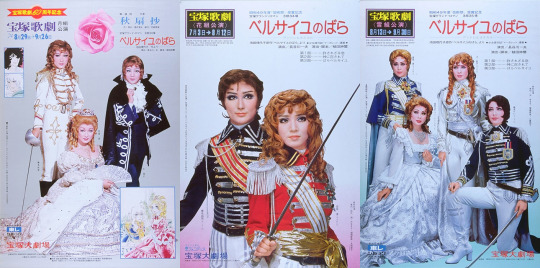
Posters of the first three Takarazuka adaptations, from between 1974 and 1975. Since then, the Revue has adapted the manga 11 times, with a new run scheduled for 2024.
The Revue was established in 1913 by the owner of Kansai's leading railway company, Hankyu, to boost tourism to the city of Takarazuka, his line's last stop. It was a huge success, and soon, the group had its own luxurious theater as well as its very exclusive academy where young ladies underwent an arduous audition process to become Takaraziennes. In 1934, a second Takarazuka theater opened in Tokyo.
However, in the early 1970s, Takarazuka faced stagnation, with declining ticket sales attributed to the growing popularity of alternative entertainment forms such as cinema and television.
In 1973, Shinji Ueda, who had risen through the Takarazuka ranks as a director, made his debut as a playwriter in the company with a musical based on ancient Japanese history. While thinking about his next project, he decided to check out a manga popular with some Takarazuka fans, "Rose of Versailles," and he quickly realized it was the perfect theme for an adaptation. Lady Oscar, who had lady-like features but was also as handsome as a man, was the embodiment of the male role-playing Takaraziennes. Ueda reached out to Ryoko Ikeda, who, as an admirer of the troupe, quickly granted the rights.
But Ikeda and Ueda's excitement wasn't shared by many. Most of the Takarazuka team were skeptical about a play inspired by something as vulgar as a manga. Fans of the original were also highly protective of its characters and entirely against a live adaptation.
Amid this climate of distrust, the play opened at the end of August 1974 at the Takarazuka Grand Theater. The reaction after the first night was extremely positive. Soon, Takarazuka's "Rose of Versailles" was the hottest ticket in all of Japan, with the press breathlessly covering the "BeruBara boom" that led thousands of people to stand hours in line to get tickets to the coveted performances in Kansai and Tokyo. Ikeda herself was shocked by the media phenomenon when she returned from an overseas trip and had hundreds of reporters awaiting her at the airport.
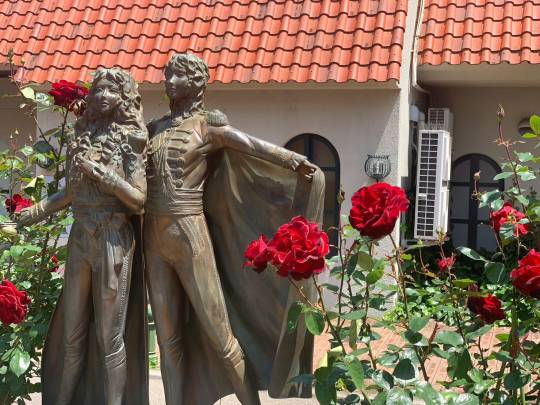
A statue of Lady Oscar and Andre surrounded by rose bushes sits outside the Takarazuka Grand Theater in Hyogo, Japan.
The "BeruBara" phenomenon single-handedly reversed Takarazuka's fortunes, leading to record-shattering ticket sales for the company. The Takarazuka Academy, which had seen declining applicants, suddenly became highly sought-after again, originating the saying "Todai in the East, Takarazuka in the West," comparing it to Tokyo University, the most prestigious university in Japan. The phrase underscored the desirability and prestige associated with a position at the troupe.
Ultimately, the success of "The Rose of Versailles" propelled Takarazuka back to the pinnacle of the entertainment industry, a position it maintains to this day. The brand continues to hold great esteem among women of all ages in Japan, with Takarazuka's stage adaptations, derived from Broadway musicals, movies, novels, and shoujo manga, consistently selling out. Notably, various adaptations of "BeruBara" have collectively sold over 5 million tickets since 1974.
Following the manga and Takarazuka adaptation's explosive success, the anime debuted in 1979. While the anime received acclaim, Ikeda herself was not entirely satisfied, mainly due to the treatment of her favorite character, Andre, who played a significant role in the manga but had a minor presence in the animated version, which focused almost entirely on the manga's most popular character, Lady Oscar.

In 2013, celebrating Margaret's 50th anniversary, new special chapters of "BeruBara" were published. The first new story in 40 years resulted in Margaret magazine selling out across the country.
"BeruBara" remains a prominent franchise in Japan, spawning numerous licensed products, sequels, and spin-offs. Ryoko Ikeda, known for other successful series, continues to garner widespread respect and media attention. However, while almost everything related to "The Rose of Versailles" turned into a hit, there was an exception.
In March 1979, a few months before the anime premiere, a live-action film adaptation debuted with great fanfare. Fittingly for such a hot property, the movie was one of the most ambitious productions in Japanese cinema, with a substantial 1 billion yen budget.
The Palace of Versailles granted permission to shoot in its interior. The film was filmed in English, with a European cast. The project was helmed by France's hottest movie director, Jacques Demy. Demy wasn't respected only in the West but also in Japan, where his two most important films, "The Umbrellas of Cherbourg" (1964) and "The Young Girls of Rochefort (1967)," were also hits. In fact, to this day, both flicks remain popular among trend-conscious Japanese as examples of stylish oshare movies that fully capture aspirational girls' culture (alongside, among others, Sofia Coppola's "Marie Antoinette"). Demy, the mind behind dreamy, girly movies, seemed like the perfect choice to turn this blockbuster shoujo classic into a live-action film.
The movie had the backing of three gigantic domestic corporations: Toho, the leading Japanese movie distributor; Nihon Terebi (NTV), one of the main TV stations; and cosmetic giant Shiseido. NTV and Shiseido made sure the movie had one of the most extensive marketing campaigns Japan had ever witnessed. The TV station aired specials and segments on this grand production. Meanwhile, Shiseido made the star of the movie -- British actress Catriona McCall, who played Oscar -- the face of its spring campaign, promoting its new Red Rose lipstick. Catriona was plastered on billboards across the country, made media and department store appearances, and starred in luxurious TV spots.

On the left, Lady Oscar and Marie Antoinette adorn the cover of Margaret in 2016, over 40 years after the end of the original serialization. On the right, Oscar models Dolce & Gabanna new collection for high-end fashion magazine Spur in 2014, celebrating 40 years of the conclusion of the original manga.
Back then, Kanebo, the second biggest local cosmetic company, was in fierce competition with Shiseido. TV ads from both companies had a tremendous impact, propelling singles to the top of the charts, and there was a battle on which commercial would feature the biggest hit. But, in the spring of 79, the focus of the fight changed. As a response to the Catriona "Rose of Versailles" campaign, Kanebo also hired a British beauty, actress Olivia Hussey, and launched a "Super Rose lipstick" with the tagline "You are more beautiful than a rose." The cosmetics war was another proof of the chokehold "The Rose of Versailles" had in the decade.
But, when the movie finally premiered, it was a flop. Critics hated it. Japanese fans thought the adaptation was weak and lacked impact. Catriona, in particular, was very criticized for not conveying Oscar's androgynous charm, which perfectly balanced masculinity and femininity. With the well-received anime premiering just a few months later, the expensive movie adaptation ended up being outshined and forgotten. It became only a costly footnote in its history.
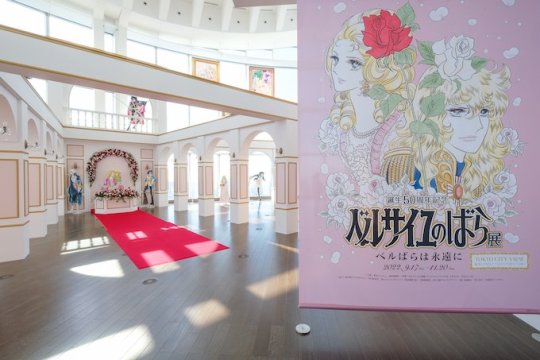
An exhibition in Tokyo celebrates 50 years of BeruBara in 2022.
(It's worth noting that Kanebo clearly won the CM war. The "You Are More Beautiful than a Rose" song they commissioned from singer Akira Fuse became a considerable hit).
Movie aside, "The Rose of Versailles" is one of Japan's most beloved comics. From its debut in 1971 to its film and anime adaptation in 1979, it remained front and center in the country's mind throughout the whole decade. Its impact was felt in different fields, from the cosmetic business to the publishing business, from live theater to TV. It also forever changed how shoujo manga was perceived and remains one of the country's most beloved properties.
Ace-Scoring Manga
The 1970s marked a turning point for shoujo manga, as it began to gain recognition beyond its traditional audience, propelled not just by critical acclaim but by commercial success. The era witnessed the emergence of several blockbusters that captured the public's imagination. Notable among them were Yoko Shoji's "Seito Shokun," a tale centered on the daily exploits of a mischievous high-schooler, and Waki Yamato's "Haikara-san ga Toru," a love story set in the Meiji period featuring a tomboy with a lady-like demeanor. These manga were significant hits during their publication in Shoujo Friends, becoming best-selling titles.
Some shoujo classics from the '70s are still in publication today, appealing to a diverse readership spanning multiple generations. Suzue Michi's "Glass Mask," serialized in Hana to Yume since 1976, remains a cultural phenomenon with 49 tankobon volumes, over 55 million copies sold, an anime adaptation, a live-action drama, and a stage play. Similarly, Chieko Hosokawa's "Crest of the Royal Family," chronicling the adventures of a young American girl transported to ancient Egypt, has been a consistent presence in Princess magazine since 1976, boasting 69 volumes and over 45 million copies sold to date.
But, when talking about definitive shoujo classics from the '70s, titles that were historical successes, influenced everything going forward, and are known by everyone, three titles come to mind. We already explored one of these, "The Rose of Versailles." One of the other three is "Ace wo Nerae."

Following the monumental success of "Attack No. 1," the prospects of another shoujo sports manga achieving similar heights of popularity seemed improbable. However, Weekly Margaret defied expectations once more in 1973 with the release of Suzumika Yamamoto's "Ace wo Nerae" ("Aim for the Ace"), a compelling narrative focused on tennis that swiftly captured the nation's attention.
Japan and tennis already had some prior history. The first Japanese Olympic medalist was a tennis player, Ichy Kumagae, in 1920. Emperor Akihito met his commoner wife, Michiko, at a tennis match, and they initially bonded over their love for the sport. But, in the 70s, the country was taken over by an unprecedented tennis boom. At high schools across the nation, tennis became the most popular after-school activity. Fashion magazines like JJ and Popeye dedicated pages and pages to "tennis fashion." At the same time, trendy young adults decked in clothes from sports brands populated Shibuya and other stylish districts in Tokyo.
There were several contributors to the tennis boom. But the remarkable success of "Ace wo Nerae," which first conquered girls before dominating the nation, played a part in it.
The manga follows the journey of Hiromi Oka, a high school student initially plagued by insecurities but propelled into the world of tennis through the encouragement of her coach. "Ace wo Nerae" portrays her growth from a hesitant newcomer to a world-class tennis player, navigating challenges and discovering hidden potential along the way.

From left to right: Madame Butterfly, lead character Hiromi Oka and coach Jin Murakata as depicted in the anime. Madame Butterfly, a rich wealthy student who was gentle and a world-class tennis player, is a fan favorite character.
In 1973, "Ace wo Nerae" was adapted into an anime. Despite initial modest ratings, the anime gained popularity through reruns. Encouraged by this, NTV decided to remake the cartoon. The second adaptation, which debuted in 1978, was an immediate hit. Concurrently, Weekly Margaret revived the manga series, which, after being first finalized in 1975, ran again from 1978 to 1980, spanning a total of 18 volumes.
Since "Ace wo Nerae," several hit mangas focused on tennis -- both shoujo and shonen -- were published. But, thanks to the success of its anime and the intragenerational support for the manga, the original work by Suzumika Yamamoto is still considered one of the defining and most beloved works about the sport. Its role in propelling tennis culture as part of the oshare youth culture of the '70s also defines its impact.
Japan Wants Candy
Following the monumental multimedia success of "The Rose of Versailles" and "Ace wo Nerae," the third shoujo sensation of the '70s is "Candy Candy."

Initially published in Nakayoshi, the story started taking shape when editors at the magazine sought a work of literary excellence akin to beloved classics popular among girls, like "Heidi" and "Anne of Green Gables." They enlisted Keiko Nagita, writing under the pen name Kyoko Mizuki, and paired her with one of the magazine's most famous artists, Yumiko Igarashi. The collaborative effort resulted in the creation of "Candy Candy," centered around an American, blond, blue-eyed orphan named Candice "Candy" White Ardlay.
"Candy Candy" epitomized various shoujo directions prevalent in the '70s. The protagonist, a white girl with lustrous blonde hair, embodied the fascination with Western culture during a time when Japanese youth held a keen interest in Europe and the United States. The manga's narrative style, characterized by its dramatic tone and intricate plot twists, also aligned with the prevalent storytelling preferences of the era.
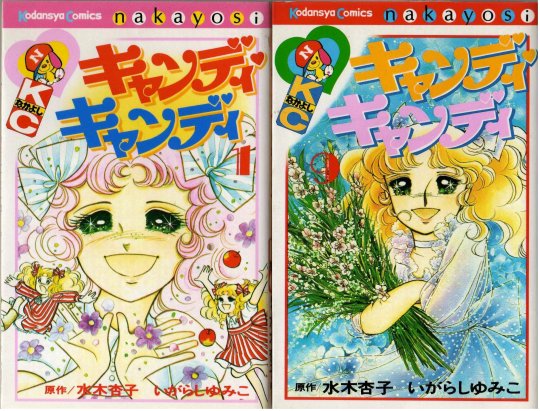
Candy Candy was such a resounding success that it became the first manga to achieve an initial print run of over 1 million copies of one of its paperback compilations.
Debuting in 1975, "Candy Candy" swiftly captured the hearts of Nakayoshi's readers, leading to unprecedented success. The subsequent anime adaptation by Toei in the following year propelled the franchise into the realm of a cultural phenomenon, sending manga tankobon sales skyrocketing. The seventh volume of the "Candy Candy" compiled paperback reportedly became the first Japanese manga to achieve an initial print run of over 1 million copies. Additionally, Nakayoshi's sales surged, surpassing those of Shueisha's Ribon for the first (and only) time.
The adventures of young Candy were also licensing gold. With over 100 licensed products, the "Candy Candy" doll alone sold 2 million units, solidifying Bandai's position as Japan's premier toymaker, a status it continues to uphold to this day. The resounding success of "Candy Candy" forged a lasting alliance between Kodansha's Nakayoshi, Toei Animation, and toymaker Bandai, which led to the iconic "Sailor Moon" franchise in the 1990s.
While "Candy Candy" concluded its run in 1979, its appeal extended far beyond its original target demographic, captivating kids, teenagers, and adults alike, thus contributing significantly to the manga and anime's widespread acclaim and enduring popularity.
However, a protracted legal dispute between Igarashi and Nagita has prevented the commercialization of any "Candy Candy" related products since the late 1990s, including reprints of the manga and re-broadcasting of the anime. The lawsuit arose from Igarashi's unauthorized licensing of merchandise based on the franchise, falsely asserting sole ownership of the copyright. Although Igarashi was initially credited as the lead artist in Nakayoshi during the manga's publication, the court ultimately ruled in Nagita's favor, emphasizing that Igarashi's artistic foundation was built upon Nagita's written work.
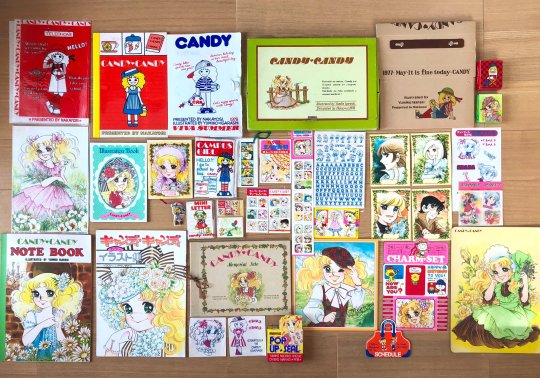
A collection of "Candy Candy" freebies offered by Nakayoshi magazine in the '70s. During the publication of the series, Nakayoshi would eclipse Ribon's sales for the one and only time in its history, (image credit)
Consequently, any commercial exploitation of Yumiko Igarashi's "Candy Candy" artwork necessitates the approval of both Igarashi and Nagita, a challenging prospect given the existing feud. Nagita, on the other hand, can profit from "Candy Candy" as long as she doesn't include any illustrations, which allowed her to release a book sequel in 2010. However, due to the dispute, one of the most beloved works in Japanese manga history is currently out of print. The lawsuit also blocks the anime from being aired or distributed. But, despite the almost two-decades-long media ban, "Candy Candy" remains widely known and beloved across Japan, a testament to its staying power.
While smash hits like "Candy Candy," "Ace wo Nerae," "Rose of Versailles," "Seito Shokun," "Hikara-san ga Tooru," and "Glass Mask," among others were key pieces into shoujo finally earning the respect it deserved, the rise of a revolutionary group of artists during the '70s was another critical element in shoujo's rise: the Year of 24 Group.
Part 2
#1970s japan#1970s#vintage shoujo#shoujo manga#lady oscar#rose of versailles#ace wo nerae#candy candy
67 notes
·
View notes